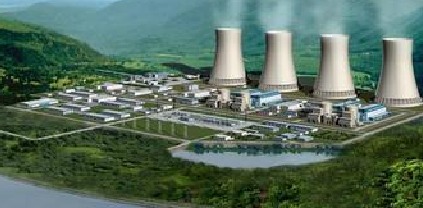 According to the notice issued by the National Development and Reform Commission on June 15, regarding the improvement of the on-grid electricity pricing mechanism for nuclear power, the on-grid tariffs will be changed from individual pricing to benchmarking tariffs for nuclear power units put into operation after January 1, 2013. The national unity is 0.43 yuan/kWh. .
According to the notice issued by the National Development and Reform Commission on June 15, regarding the improvement of the on-grid electricity pricing mechanism for nuclear power, the on-grid tariffs will be changed from individual pricing to benchmarking tariffs for nuclear power units put into operation after January 1, 2013. The national unity is 0.43 yuan/kWh. . “Since the Fukushima nuclear accident, China has put forward new requirements for the safety of nuclear power, and the increase in safety investment will increase the cost of nuclear power construction.†An insider from China Guangdong Nuclear Power told the reporter that although there is no authoritative measure yet, The new security costs will be roughly 5%. Moreover, as far as the security sector is concerned, based on existing historical data, the safety-related costs in the construction of nuclear power plants generally account for 10%-15% of the total cost. â€
According to the most advanced technology and the most stringent safety standards requirements, the future "second generation plus" unit will be difficult to be approved, the new project launched at least three generations of nuclear power units. In the near term, the main reference is AP1000.
However, as the third-generation nuclear power technology, AP1000 has a much higher construction cost than the "second generation plus" unit. If you add the new costs in the security field, can the AP1000 pass the cost of benchmarking?
Historically, due to the particularity of the nuclear power industry as a result of the military industry, the pricing authorities have been adopting a “one pile, one machine, one price†approach to determine the on-grid tariffs for new nuclear power plants. The implementation of the benchmark price of electricity, while ending the "protection period" of nuclear power, "a pile of one machine and one price," also exerted a negative pressure on the cost of nuclear power construction. It also caused different nuclear power projects to face different situations.
At present, the 15 nuclear power generating units that have been in operation in China are basically "second generation plus" units, and of the 26 units under construction, there are 6 third generation nuclear power generating units, of which 4 are AP1000 units located at the two nuclear power stations at Sanmen and Haiyang respectively. Construction site.
A survey by the reporter found that the benchmark electricity price of 0.43 yuan/kWh was higher than the average tariff of a number of previously approved nuclear power projects by 0.020.04 yuan/kWh.
Compared with the “second generation plus†nuclear power generating units, the cost pressure will increase due to the third-generation technology AP1000 is still in the first three generations of models under construction. It is understood that taking Sanmen Nuclear Power Unit No. 1 as an example, it is expected that the on-grid electricity price before the Feasibility Study report is higher than 0.5 yuan/kWh in order to cover the cost.
However, the National Development and Reform Commission also left a certain amount of buffer space for the AP1000 project. According to the "Notice", "The first or first batch of nuclear power units or demonstration projects that undertake nuclear power technology introduction, independent innovation, and localization of major special equipment can be properly increased on the basis of the national nuclear power benchmark price, specifically at the provincial level. The pricing authorities proposed a plan for approval by the National Development and Reform Commission, which means that the on-grid tariffs for the first batch of AP1000 reactors in China are likely to receive special treatment.
“As a support project, the first batch of AP1000 is much more difficult in terms of engineering, and because the design has not been solidified, it has brought a lot of problems to the manufacture of related equipment. As a result, the equipment scrap rate is higher and the construction cost is increased.†Experts who visited the construction of three nuclear AP1000s told reporters.
“This is mainly because the advanced design of equipment and materials manufacturers and suppliers have reached a new height. There are few potential suppliers at home and abroad, equipment procurement difficulties. In addition to frequent changes in design, the test cycle is long, and thus affect Equipment procurement, manufacturing, and final delivery,†an insider close to the national nuclear power company told reporters.
Recently, the reporter learned from a document from the Professional Reactor Operators Association that, in January of this year, the AP1000 main pump was found to have flaws in its impeller blades. And this is likely to lead to other major unfavorable factors, so that the quality of security risks. At this time, some of the main pumps have already arrived at the three nuclear power stations.
"In fact, equipment problems like this are not uncommon during the construction of the AP1000. The resulting tardiness will likely delay the first AP1000, scheduled to be connected to the grid in October 2014, until 2015. Only one year can be connected to the grid for power generation.†The insider close to the state nuclear power company told reporters.
Although in theory, the AP1000 has saved a lot of equipment due to its innovative design and the construction price is lower than the second-generation addition unit, how to make good use of the current buffer and support policies is critical to the future development of the AP1000. It is expected by industry insiders that some AP1000 units that are not able to enjoy the special treatment of benchmark electricity prices are likely to be eliminated by the market.
Scented Candles Gift Set,Chirstmas Soy wax gift,Scented wax with oil
XINGYONG XMAS OPTICAL (DONGGUAN ) CO., LTD , https://www.xingyongled.com
